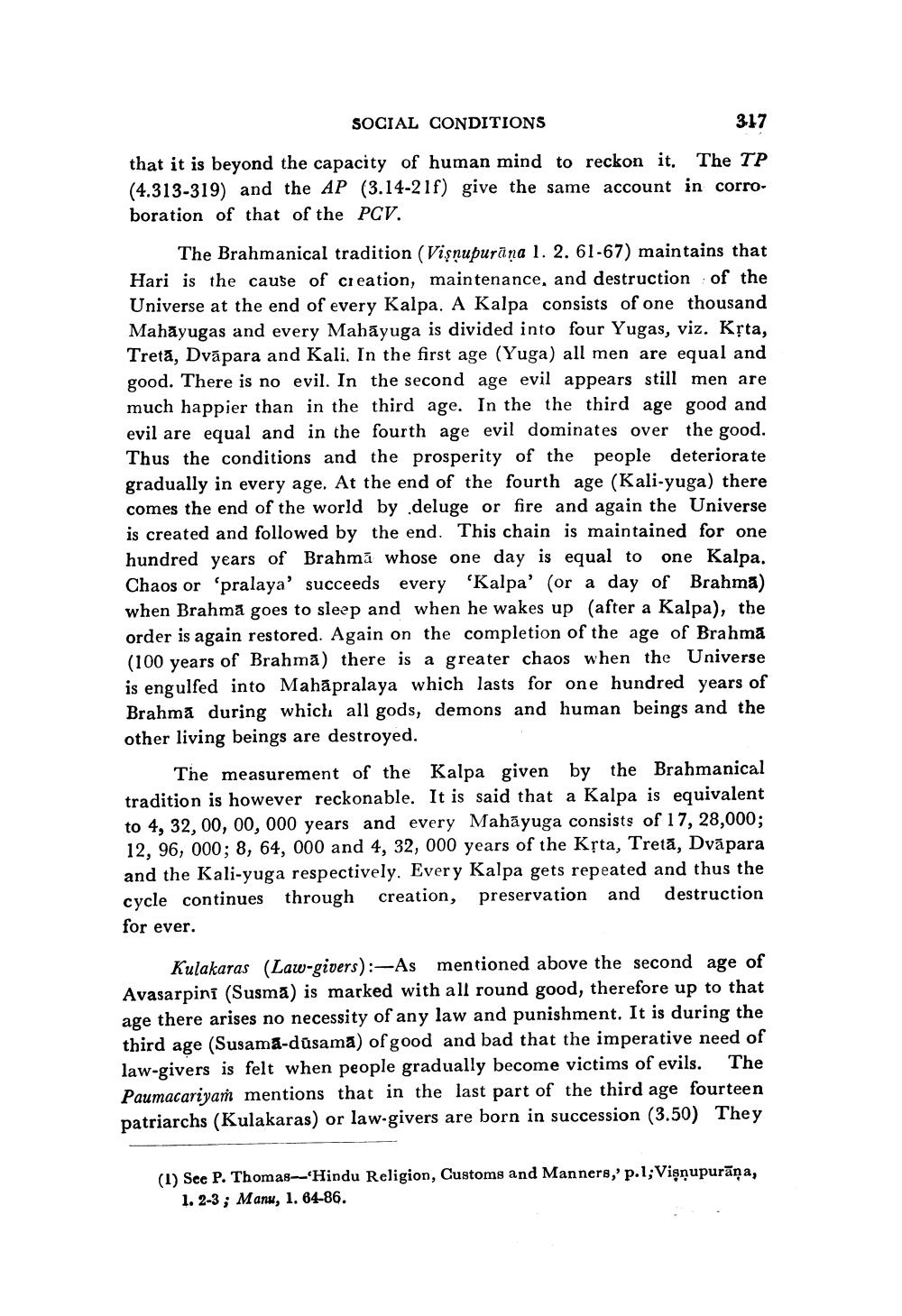________________
SOCIAL CONDITIONS
317
that it is beyond the capacity of human mind to reckon it. The TP (4.313-319) and the AP (3.14-21f) give the same account in corroboration of that of the PCV.
The Brahmanical tradition (Vişnupuräna 1. 2. 61-67) maintains that Hari is the cause of creation, maintenance, and destruction of the Universe at the end of every Kalpa. A Kalpa consists of one thousand Mahāyugas and every Mahāyuga is divided into four Yugas, viz. Krta, Tretā, Dvāpara and Kali. In the first age (Yuga) all men are equal and good. There is no evil. In the second age evil appears still men are much happier than in the third age. In the the third age good and evil are equal and in the fourth age evil dominates over the good. Thus the conditions and the prosperity of the people deteriorate gradually in every age. At the end of the fourth age (Kali-yuga) there comes the end of the world by deluge or fire and again the Universe is created and followed by the end. This chain is maintained for one hundred years of Brahmã whose one day is equal to one Kalpa. Chaos or 'pralaya' succeeds every 'Kalpa' (or a day of Brahma) when Brahma goes to sleep and when he wakes up (after a Kalpa), the order is again restored. Again on the completion of the age of Brahma (100 years of Brahma) there is a greater chaos when the Universe is engulfed into Mahāpralaya which lasts for one hundred years of Brahma during which all gods, demons and human beings and the other living beings are destroyed.
The measurement of the Kalpa given by the Brahmanical tradition is however reckonable. It is said that a Kalpa is equivalent to 4, 32,00, 00, 000 years and every Mahāyuga consists of 17, 28,000; 12, 96, 000; 8, 64, 000 and 4, 32, 000 years of the Kộta, Tretā, Dvāpara and the Kali-yuga respectively. Every Kalpa gets repeated and thus the cycle continues through creation, preservation and destruction for ever.
Kulakaras (Law-givers):-As mentioned above the second age of Avasarpini (Susma) is marked with all round good, therefore up to that age there arises no necessity of any law and punishment. It is during the third age (Susama-dūsama) of good and bad that the imperative need of law-givers is felt when people gradually become victims of evils. The Paumacariyam mentions that in the last part of the third age fourteen patriarchs (Kulakaras) or law-givers are born in succession (3.50) They
(1) See P. Thomas--Hindu Religion, Customs and Manners,' p.1;Vişnupurāņa,
1. 2-3; Manu, 1. 64-86.




